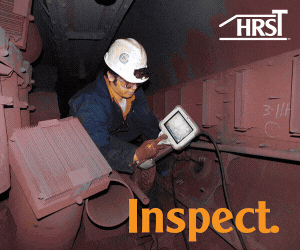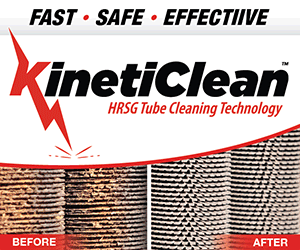This year’s annual HRSG Forum with Bob Anderson is taking place online in monthly installments. If the first, held May 3, 2021, is any indication, you won’t want to miss any of the upcoming sessions. Follow CCJ ONsite for announcements of session content, dates, and times, and registration link. Invited participants are powerplant owner/operators and consultants and vendors with an interest in heat-recovery steam generators.
The two issues focused on in this first round were hexavalent chromium and trim erosion of high-pressure (HP) bypass pressure control valves (PCV). Both are vexing issues for combined-cycle facility operators and even incremental additions to users’ knowledge/experience base are worth paying attention to. Hex chrome is covered here; the following article summarizes key points extracted from the valve panel discussion.
To tackle the hex-chrome issue, venerable HRSG expert and consultant, Bob Anderson, and co-chairman expert chemist/metallurgist Barry Dooley of Structural Integrity Associates Inc, enlisted David Addison, principal consultant, Thermal Chemistry Ltd, a world-class authority on powerplant water chemistry. Watch and listen to Addison’s presentation below.
The tell-tale bright yellowish deposits of the highly toxic hexavalent chromium show up on air/gas side equipment downstream of high-energy chromium-containing piping, especially in areas where water ingress occurs. Typical areas reported out to the industry include gas-turbine hot-gas-path components; steam-turbine hot external components, such as bolts; and HRSG hot-pipe external surfaces.
Precautions and protections
Follow these recommended precautions and protections when inspecting areas that have tested positive for hex chrome (or suspected of containing the toxic chemical) and/or when removing the material.
Activity: Inspections in areas where hex chrome residues are present but the residues have not been disturbed.
Exposure: Skin absorption, ingestion.
Controls: Eye protection, disposable nitrile gloves, particle-resistant disposable overalls. Plus, no eating, drinking, smoking, or bathroom breaks should be taken without first washing hands and face.
Activity: Removal or disassembly of items with hex-chrome residues present.
Exposure: Skin absorption, ingestion, inhalation.
Controls: All the controls recommended for inspections (above), in addition to the following: P2 respirator and, where possible, ultrasonic cleaning of parts.
Activity: Grinding, wire brushing, finishing, welding, etc, of surfaces with confirmed hex-chrome residue.
Exposure: Skin absorption, ingestion, inhalation.
Controls: All the controls recommended for inspections and removal/disassembly (above), in addition to the following: goggles, upgraded respiratory protection (to powered air-purifying respiratory protection), mechanical ventilation HEPA filters, and use of controls to limit the aerosolization of hex-chrome residues.
Hex chrome is a known and manageable problem in the welding of chromium alloys. Protocols for dealing with it are well-established. Turbine OEMs have issued technical bulletins on it. While those bulletins have not specified the chemical form, XRD/XRF testing confirms that it manifests as calcium chromate. Sources of calcium include anti-seize pastes (containing calcium oxide, CaO) and some lagging/insulation materials.
If you see bright yellow deposits on your equipment, first, don’t panic. But also don’t think it is sulfur-bearing. That’s not possible, though some have made that mistake.
Second, make sure you don’t disturb a deposit, until you are ready to remove it completely. Left to its own devices, calcium chromate will not vaporize or melt. When you are ready to remove it, follow protocols to avoid both worker exposure and inhaling the dust (sidebar). The good news is that Addison is not aware of any health issues associated with hexavalent chromium from powerplant operations.
Eliminating the calcium source avoids the problem. If possible, select anti-seize pastes and insulating materials with no calcium oxide. Preventing water ingress also goes a long way towards mitigating the problem. Adding a reducing agent will convert the hexavalent form to the benign trivalent form. One OEM recommends spraying an ascorbic acid/surfactant formulation on the deposit, and field experience suggests this works well.
Other areas which exhibit the right conditions for hexavalent chromium—chromium-containing components, oxygen atmospheres, high temperature, presence of calcium, and water ingress—should be suspect, including superheater and evaporator upper and lower crawl spaces, gas-turbine exhaust ductwork (insulation side). Testing is underway to confirm presence in these areas.





